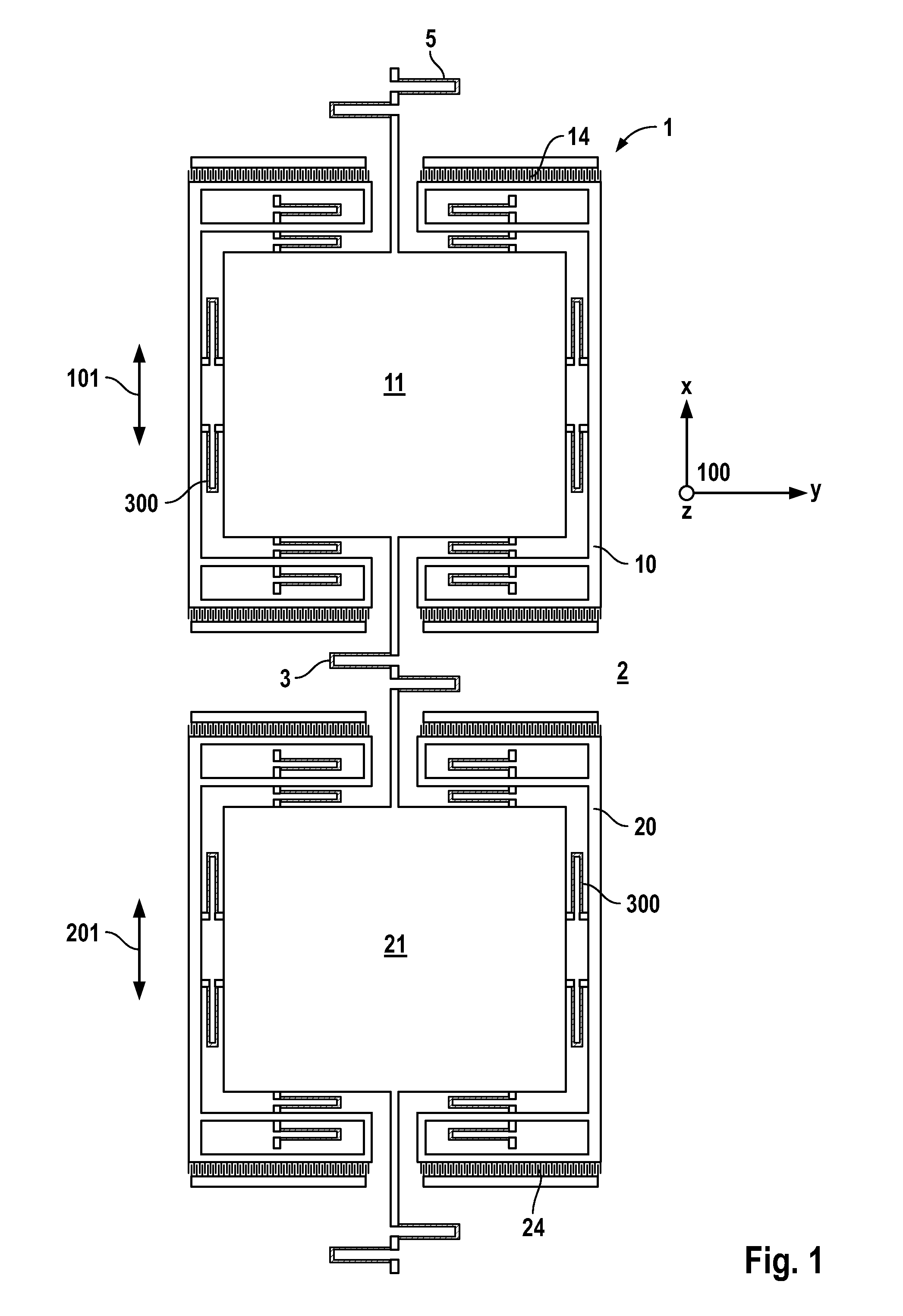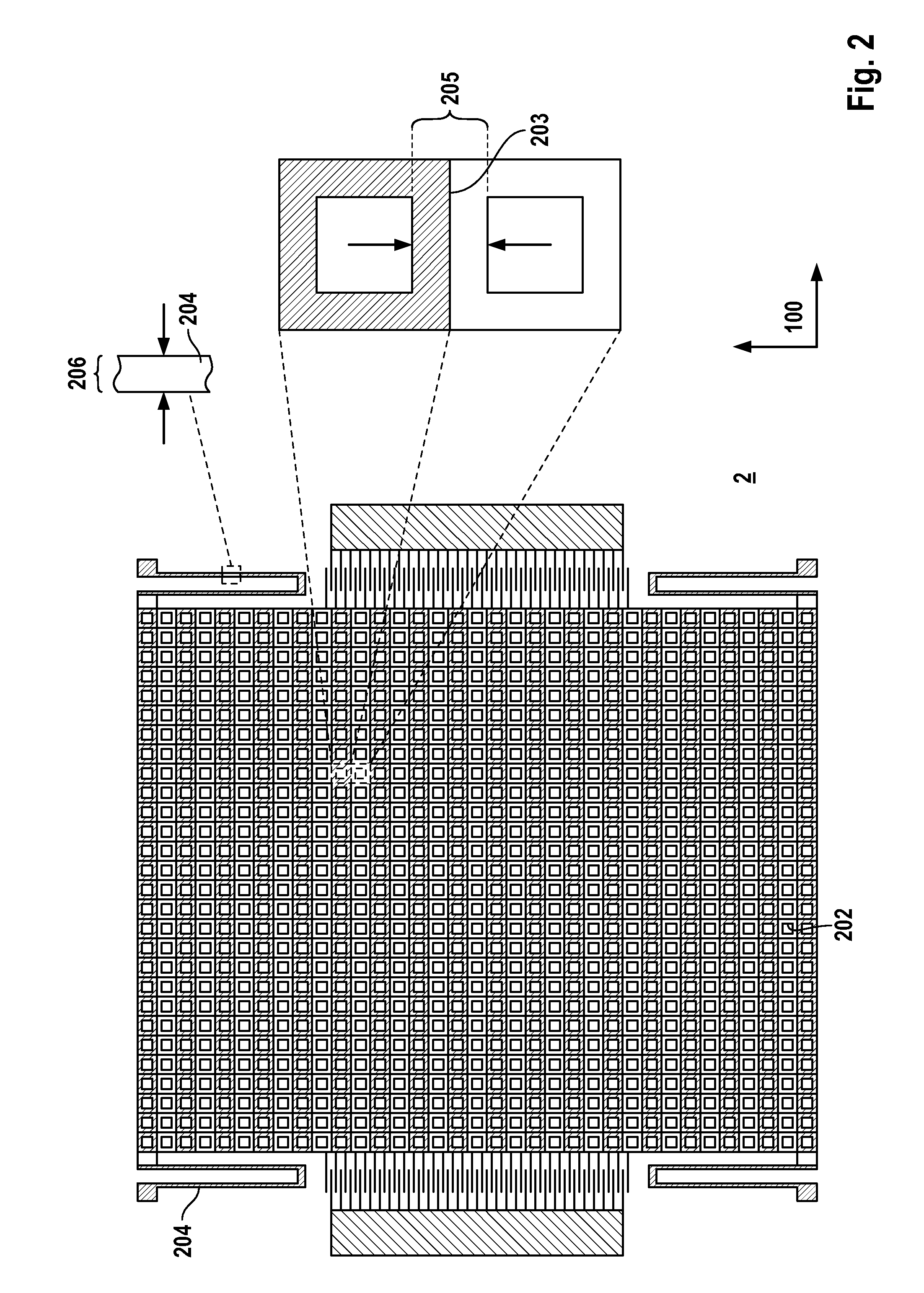Micromechanical structures
a micromechanical structure and sensor technology, applied in the direction of acceleration measurement using interia force, turn-sensitive devices, instruments, etc., can solve the problems of electromechanical instability, sensing-mass elements will be pulled downward in the direction of the electrodes, and the frequency spread of the respective spring-mass system, so as to achieve the effect of increasing the absolute accuracy of setting the drive frequency and/or the detection frequency
- Summary
- Abstract
- Description
- Claims
- Application Information
AI Technical Summary
Benefits of technology
Problems solved by technology
Method used
Image
Examples
Embodiment Construction
[0030]Identical or corresponding parts are provided with the same reference numerals in the various figures, and are therefore generally in each case designated or mentioned only once, as well.
[0031]FIG. 1 shows a conventional yaw-rate sensor in the form of a micromechanical structure 1, the yaw-rate sensor having a substrate 2 with a main plane of extension 100. The yaw-rate sensor also includes a driving element 10 which is secured to substrate 2 with the aid of third coupling elements 4 in the form of further bending springs and which is excited by first comb drives 14 into a first oscillation 101 along a first direction X parallel to main plane of extension 100. A first sensing-mass element 11 is joined by further coupling means 300 to driving element 10 in a manner allowing movement. The yaw-rate sensor further has an identical second driving element 20 having a corresponding second sensing element 21 and second comb drives 24. First and second sensing-mass elements 11, 21 are ...
PUM
 Login to View More
Login to View More Abstract
Description
Claims
Application Information
 Login to View More
Login to View More - R&D
- Intellectual Property
- Life Sciences
- Materials
- Tech Scout
- Unparalleled Data Quality
- Higher Quality Content
- 60% Fewer Hallucinations
Browse by: Latest US Patents, China's latest patents, Technical Efficacy Thesaurus, Application Domain, Technology Topic, Popular Technical Reports.
© 2025 PatSnap. All rights reserved.Legal|Privacy policy|Modern Slavery Act Transparency Statement|Sitemap|About US| Contact US: help@patsnap.com



